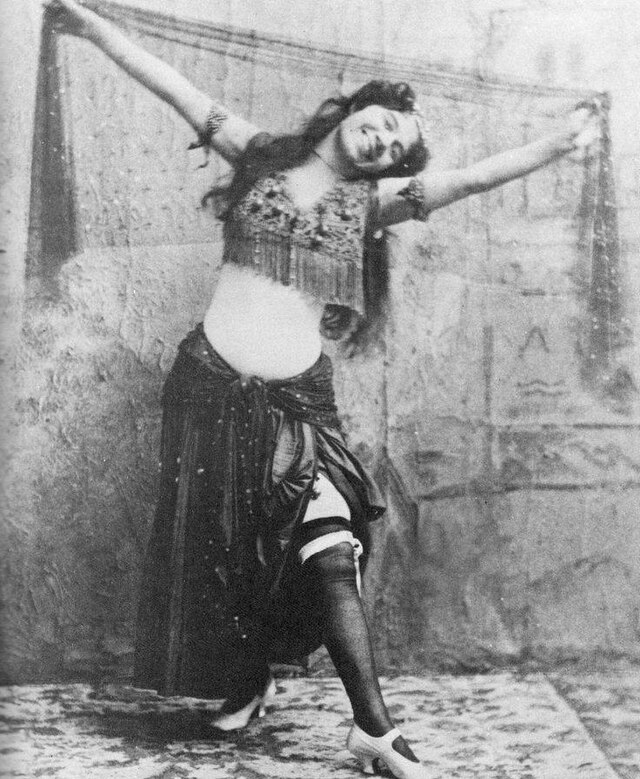Egyptian Belly Dance History
The raqs baladi (folk dance) and sharqi (belly dance), deeply rooted in Egypt’s cultural history and developed there, emerged as a celebration of feminine strength and connection to the divine. It found their origins in Ancient Egyptian temples, where women engaged in captivating performances to invoke divine blessings, especially those of love and fertility, marking significant rites of passage into womanhood.

In the 19th century, Egyptian belly dance underwent significant cultural and social transformations in Central Egypt. Two groups of scholarly women known as the “awalim” were highly esteemed for their ability to write poetry, sing, compose music, and improvise lyrics for ballads known as “mawal.”The other group of women ” Gypsies” were known as “ghawazi,” and they mostly performed unvelied dances in public areas like coffee shops and during events like “mulid” or feast festivities.

The collision of Western influences and the unstoppable advance of capitalism has led to the regrettable sexualization and distortion of this dance form.

British Influence in Egypt after World War I
In the aftermath of World War I, with Egypt under British rule, traditional dance halls were replaced by cabarets, and belly dance became popular entertainment for British soldiers. This shift not only altered the context in which oriental dance was performed but also contributed to its uprooting from its culture.

Little Egypt and the American Misappropriation:
The success of the Little Egypt in America triggered the misappropriation of belly dance. Farida Mazhar, a renowned dancer, faced identity theft, and the performances by American women, infused with immorality, further fuelled a negative stigma surrounding belly dancing in American society. This period marked a departure from the dance’s cultural context, giving rise to a skewed perception.

Non-Egyptian Dancers and the Impact of Capitalism:
Modern belly dance faces challenges due to non-Egyptian dancers deviating from traditional performances. Some performers shifted from dancing to classical Egyptian music to embracing explicit mahraganat songs, contributing significantly to the commercialization and sexualization of the art form. The association of belly dancing with nightclubs, often characterized by a degenerated environment, has further tarnished its image.

As capitalism took hold, the unfortunate image of nightclubs, the commodification of the dance, and the degeneration of their environments diminished the authenticity and purity of belly dance. This transformation underscores the urgent need to preserve the cultural and artistic integrity of this ancient dance form, reminding us of its roots in divine expression, communal celebration, and feminine empowerment.












